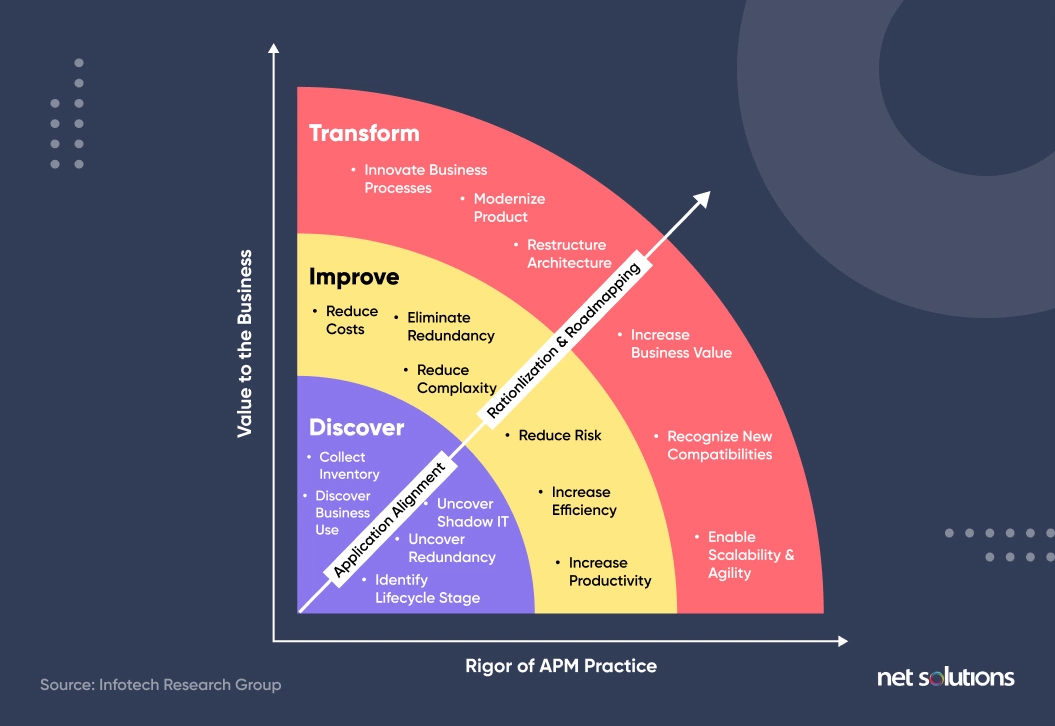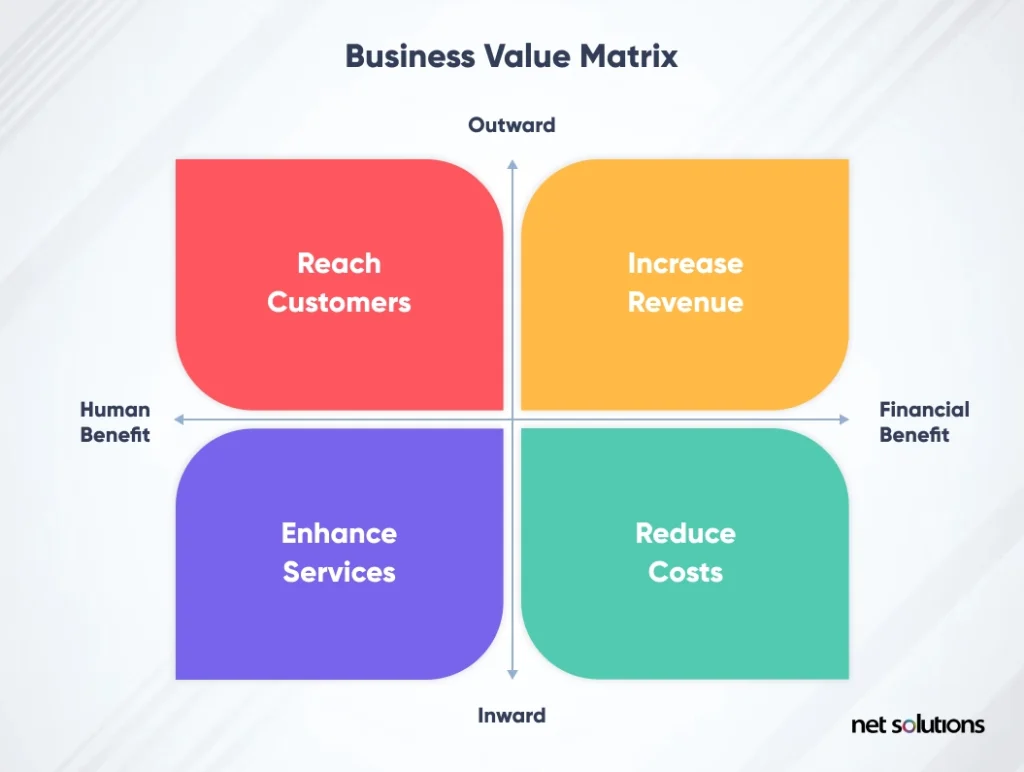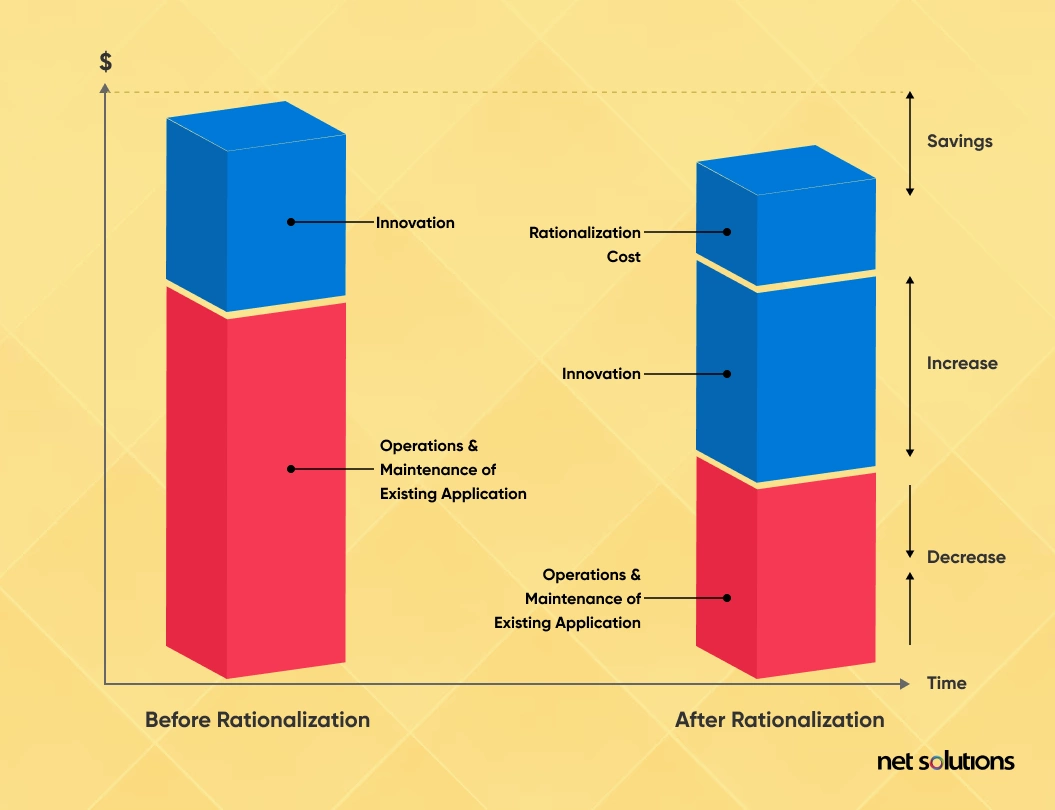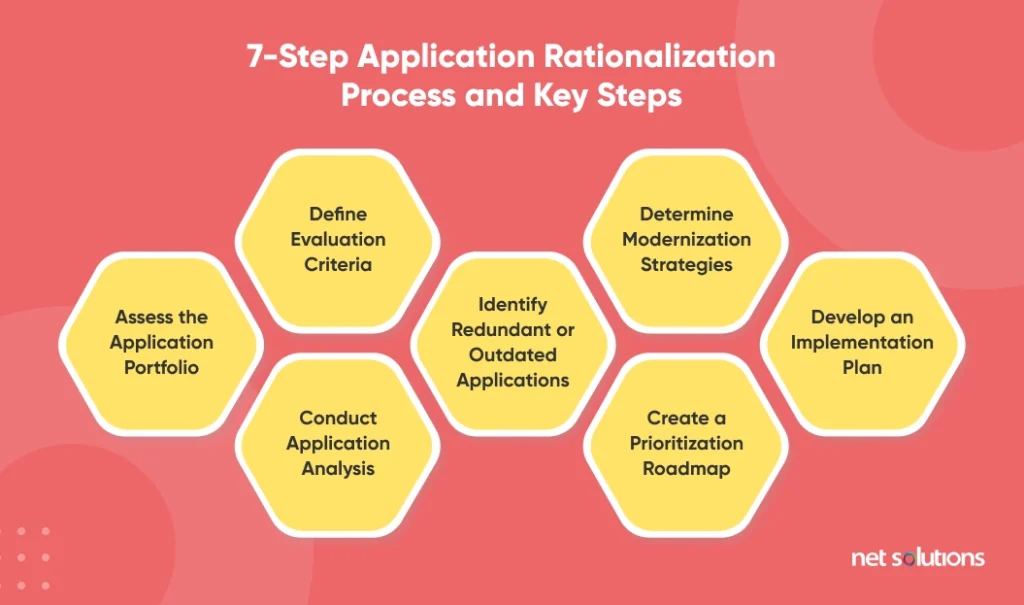Learn how to reduce technical complexity and improve efficiency with application rationalization, a strategic effort to articulate and align business applications to business needs, with a plan to retire, keep, consolidate, or modernize.
Digital transformation initiatives require a full spectrum of adjustments across people and capabilities. Many organizations use or improve existing apps before deploying new apps. CIOs must identify which systems, technology, and data must evolve. Application rationalization is a process to understand the state of internal applications.
In the 2025 State of the CIO report (survey of 906 IT leaders + 250 LOB leaders), CIOs are increasingly strategic: 41% of CIOs now characterize their role as strategic (vs 35% in 2024) in modernizing infrastructure and applications.
In this guide, we will provide a general overview of application rationalization, explain the benefits of application rationalization, go over the application rationalization strategy, and provide the understanding to begin your app rationalization process.
Understanding Application Rationalization
What is application rationalization?
Application rationalization, also known as infrastructure rationalization, software rationalization, IT rationalization, or tools rationalization, is a strategic effort to identify applications across an organization to decide which should be retained, retired, or modernized using one of the other Rs ( replatformed, refactored, or replaced) or consolidated with other apps.
Organizations approach application rationalization to help make gains on cost and efficiency, standardize or streamline the overall portfolio, and evolve internal capabilities to match changing business needs.
Application rationalization framework
Application rationalization is the process of developing an inventory of apps, listing functionality, estimating the total cost of ownership, and determining business value. During this process, CIOs can compare applications to make informed decisions that help reduce overall costs, eliminate redundancies, maximize efficiency, and identify opportunities.
Application rationalization is considered a part of application portfolio management (APM). Either independently or through an APM solution, the application rationalization framework considers three main parts:
- Discover
- Improve
- Transform

How does application rationalization optimize the application portfolio?
Over time, application portfolios grow naturally through merger & acquisition (M & A) and decentralized purchasing. This leads to technical complexity and debt and can be a source of significant risk in the form of Shadow IT if applications still need to be managed by IT.
Application rationalization is a strategic approach to align applications to business needs – what’s working, what’s not, and what can be done to optimize the portfolio. This application rationalization process involves cutting some apps, merging others, and modernizing others – resulting in fewer apps better aligned to the business need. This efficient alignment is one of the prominent benefits of modernization.
Application rationalization for cloud migration
Application rationalization is often part of overall cloud strategy and migration processes, helping identify which on-premise applications should migrate to the cloud (and how).
How does application rationalization help in a successful cloud migration?
Your cloud strategy must align with your business strategy, choosing a cloud service model for data centers (IaaS), applications and tools (SaaS), and/or supporting the development of new apps (PaaS). In application rationalization, you will be assessing which cloud apps (SaaS) you have and whether they are optimized, as well as which on-premise apps may need to be migrated (legacy application modernization) to the cloud and which method is the best method to do so. This helps you make informed decisions about what, how, and when cloud migration is the best choice to support:
- Enhanced performance and efficiency Identify opportunities to improve app performance through modernization efforts, process improvements (how apps are used and which ones), and enhanced integrations.
- Improved security and compliance Shadow IT is a source of significant risk, while legacy applications can be complex to secure or rely on outdated and unpatched systems. Security can use shared services (with cloud providers) and the latest tools and frameworks (e.g., IAM, IdP, Zero Trust) when replaced.
- Flexibility and agility Applications can be optimized with flexible infrastructure (e.g., MACH) to support microservices, API-first, and cloud-native design to help businesses scale efficiently, swap out services as needed, and respond quickly to changing needs.
- Business Continuity and Disaster Recovery To increase resiliency, improve business continuity and disaster recovery plans with redundant cloud storage options and/or architecture that includes microservices or containers.
- Future-Proofing and Innovation New application modernization trends such as low-code and no-code development are reducing time to innovation and helping businesses improve agility. Modern MACH application designs help future-proof new apps to changing needs.
Top 5 Benefits of Application Rationalization

- Improved efficiency Cloud systems can save on both energy and introduce process improvements, including using innovations (e.g., AI).
- Cost improvements Eliminate redundancy, and reduce operational costs over time. The cost of rationalization is offset over time.

- Server optimization Reduce the number of servers and systems required to support the application portfolio and ideally shift much of this to the cloud.
- Vendor management Identify redundant apps or poor licensing agreements. Consolidate purchasing for more favorable conditions.
- Alignment with business objectives Improve the ability of applications to service business needs. Eliminate non-value-adding applications.
7-Step Application Rationalization Process and Key Steps

Although the application rationalization framework can be simplified into three steps (Discover, Improve, Transform), we can break that down into 8 key steps:
- Assess the application portfolio Gather and validate data on all applications in use, their features, costs, use cases, integrations, and who owns the application.
- Define evaluation criteria Create value criteria, which likely will include:
- Total cost of ownership (TCO)
- Usage
- Business value (i.e., what capability it provides, can it be tied to a value figure)
- Health of app
- Technology Alignment
- Redundancy
Also, consider dependencies and interoperability—map dependencies with the current and planned technology stack.
- Conduct application analysis The application modernization assessment will create a matrix that applies evaluation criteria to all applications in the portfolio.
- Identify redundant or outdated applications Complete the analysis with a decision to retain, consolidate, retire, or modernize the application. Redundant applications are ones where multiple copies of a similar or the same license are used, either through siloed purchasing or M&A activity.
- Determine modernization strategies
Establish various methods of legacy application modernization, which can include:
- Rehost – lift and shift to the cloud
- Replatform – lift, tinker, and shift to optimize during the shift to the cloud
- Refactor / Rearchitect – rebuild a similar app but with modern, cloud-native architecture
- Replace – either replace with a new SaaS product or go back to the product development process to better align the product with the need.
- Create a prioritization roadmap After removing redundant applications, the next step is to focus on consolidation and modernization efforts based on the estimated business value derived from the improvement. Review and adjust as necessary, considering resource availability and budget as well.
- Develop an implementation plan Put together an execution plan with IT, DevOps, and other teams to help execute and support change management. Ensure you plan for unexpected disruptions and set up security, logging, and other telemetry.
Top 5 Challenges in Application Rationalization
- Legacy system Applications may have complex interdependencies with other legacy systems in the organization, making it difficult to decouple and modernize the application.
- Lack of documentation Discovery efforts may become very time-consuming if features of applications, or applications themselves, need to be better documented within the enterprise. Data also must be gathered to support TCO evaluation, which can take time to track down.
- Resistance to change Application rationalization requires stakeholder buy-in to gather all the data needed for discovery and to implement change.
- Limited resources and budget Although the goal of application rationalization results in lower costs, there is an up-front requirement of both time and money to support discovery and preliminary investments in new technology.
- Risk App rationalization efforts must thoroughly consider risks such as potential disruption, data loss, and shifting security/compliance needs if applications are removed or changed. A new security plan must be put in place to address changes.
Best Practices For Application Rationalization
Successful application rationalization includes:
- Clear goals and business drivers
- Thorough, validated data
- Groupings of applications to help compare and contrast during application portfolio rationalization
- Estimates of ROI for any improvements
- Stakeholder buy-in
- A Roadmap for Implementation
- Monitoring over time
- A plan to begin the rationalization process again in the future
How can Net Solutions help you?
Net Solutions offers full-spectrum application modernization services, from hands-on app rationalization and business requirements and objectives to the delivery of detailed modernization solutions.
Frequently Asked Questions
1.What are the prominent outcomes of application rationalization?
Application rationalization leads to cost savings, improved efficiency, streamlined operations, and enhanced innovation and security.
2.Can application rationalization be done without disrupting business operations?
Application rationalization can include discovery, improvements, and transformational changes to minimize business operations – utilizing effective application modernization efforts, change management, and phased rollouts.
3.How often should application rationalization be performed?
Although digital transformation priorities, budget pressures, and mergers & acquisitions can trigger a round of application rationalization, ideally, the processes are performed regularly – annually or biannually – to ensure the application portfolio remains aligned and optimized.
4.How can application rationalization support digital transformation initiatives?
Application rationalization can help CIOs identify legacy applications with high TCO and/or not optimized for business needs, helping organizations pivot to a portfolio of cloud-based applications that facilitate transformational efforts.
SHARE THIS POST
Table of Contents
Related Resources
- A Framework-based Approach for App Assessment
- App Modernization Benefits To Boost Your ROI and Future-Proof Your Business
- 11 Top Application Modernization Best Practices in 2025
- Building a Winning Application Modernization Business Case
- Legacy Application Modernization Case Studies & Success Stories
- Solving the Toughest Application Modernization Challenges
- Cloud-Native Application Modernization: Benefits & Strategies
- 8 Core Application Modernization Drivers
- Enterprise Application Modernization: Complete Guide [2025]
- Lift and Shift: The Modernization Formula for Legacy Apps
- Navigating Application Migration and Modernization [Guide]
- Application Modernization and Optimization: A Complete Guide
- What is Replatforming? A Beginner's Guide to Upgrading Your Technology Stack
- 7 Steps to Build an Effective Application Modernization Roadmap
- Application Modernization Services Market: Comprehensive Analysis
- A Step by Step Guide to Application Modernization Strategy
- Explore the Best Application Modernization Tools and Resources
- 13 App Modernization Trends That Can Support and Optimize Your App Modernization Strategy


